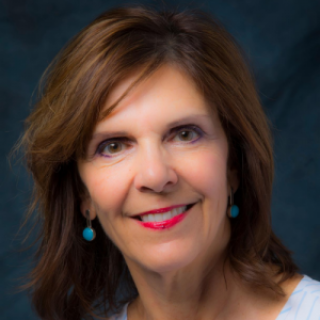Effective State Offices of Early Learning
Structural Features, Enabling Conditions, and Key Functions in Four States

June 2, 2021
Read the Executive Report
In the United States, state-level agencies administer almost $40 billion in federal funding and more than $8 billion in state funding, plus other state investments in early learning (e.g., literacy/reading proficiency). This does not include recent federal appropriations in the American Rescue Plan Act to child care providers and schools to respond to the pandemic. In addition, as part of these agencies, a State Office of Early Learning (SOEL) often oversees and manages select early childhood programs. SOELs typically have a significant role in such tasks as setting policy to ensure the quality of programs, distributing funding to local programs, and collecting data for accountability and continuous improvement.
This study sought to fill a gap in the literature regarding leadership in SOELs, how teams implement policy, and how an enabling environment with a commitment to a shared vision can produce a coherent and aligned early childhood education system that leads to improved outcomes for participating children, especially those who are most vulnerable. We were particularly interested in understanding how to build a sustainable system of effective early education that adapts to changes in the political environment, while staying focused on goals for children and families. We aimed to answer the question, Regardless of governing body, what are the structural characteristics, organizational competencies, and programmatic functions of effective SOELs?
Study States
Our case studies focused on the SOELs in the Alabama (AL), Michigan (MI), New Jersey (NJ), and West Virginia (WV). These four states were chosen using our theory of change and available data to ensure that they had rigorous policies and coherent program standards already in place.
AL’s Department of Early Childhood Education (DECE), the only separate state agency in our study, clearly benefitted from its broad authority and the direct line to and unwavering support from its various governors and legislatures. AL’s DECE was unique among the four states in having funding to support a structure of regional directors and staff to guide quality and accountability at the local classroom level. DECE operated flexibly as an agency while holding itself and its grantees to high levels of accountability. This focus on high standards and responsiveness provided evidence that DECE used to prove to its funders, decision makers, and other stakeholders that it could effectively implement a high-quality pre-K program that delivered results.
MI’s Office of Great Start (OGS) in the Michigan Department of Education (MDE) was the only SOEL of the four we studied that had an explicit focus on birth through age 8, with responsibility across four offices for all major programs, including state funded pre-K, child care, early childhood special education and early intervention, Head Start, and family engagement. OGS has benefitted from bipartisan support for early childhood education. This support builds on MDE’s priority: the health and well-being of children and youth from birth through college and career readiness. OGS’s recent move to the Division of P–20 System and Student Transitions seems to have established its early childhood programs as a cornerstone of education policy in the agency and possibly in the state.
NJ’s Division of Early Childhood Education (DECE) was established in response to the court-ordered Abbott Preschool program, which anchors much of its work in high-quality preschool components that continue to be the standards for the program. The established mixed delivery system drives DECE staff to collaborate with other state agencies overseeing child care. A recent advocacy campaign, capitalizing on the widespread and bi-partisan backing for preschool expansion, has been instrumental in supporting Governor Murphy’s annual increases in funding. DECE is working to broaden its scope to create greater alignment with K–3 but is constrained by limited staffing and lack of direct authority over K–3, which rests with other divisions in the Department of Education and in local districts.
WV’s Early and Elementary Learning Services (EELS) is distinctive for including the entire pre-K through fifth grade (P–5) continuum in its SOEL and offering universal access to preschool for 4-year- olds. EELS has effectively made use of national expertise to guide the work of its WV Pre-K-Grade 5 Task Force. The task force supports a broad set of goals for children’s health and well-being and fosters cross-agency collaboration by means of a legislatively mandated shared governance structure which includes EELS, the Office of Child Care, the Head Start Collaboration Office, and IDEA Part B. WV is innovative in leveraging resources to meet its goals, including stretching EELS limited staffing capacity.
Overview of the Findings: 12 Key Takeaways
The findings offer a set of 12 key takeaways regarding the structure, authority, and organizational capacity of SOELs; the importance of what might be termed the “enabling context”; and the functions critical to supporting children’s early learning outcomes. Although these interrelated lessons relate specifically to the pre-K and other ECE programs overseen by these four states, we offer them for consideration to stakeholders in other states who seek to improve the effectiveness of their SOELs. The lessons are not presented in chronological order, each are important, and inter-dependent.
Lesson #1: Emphasize an SOEL governance structure that provides sufficient authority. Our findings do not suggest that structuring an SOEL as a separate state agency is more advantageous or leads, in and of itself, to greater effectiveness. Instead, what seems to be critical is an elevated position in the hierarchy for early childhood, coupled with support from the governor, which provides an SOEL with greater access to decision makers and visibility within the state.
Lesson #2: Focus on the horizontal and vertical aspects of child well-being and early childhood education. These four SOELs had a vision and goals, within their organizational structure, that drove toward designing and supporting coherent practices across grade levels that provided a common language for educators, parents, and community partners to promote continuity in learning.
Lesson #3: Identify a set of priorities, with quality at the core, and pursue them relentlessly. Each of the SOELs studied had a relatively small set of goals and priorities for their work, all focused on quality. They were driven by strategic planning processes that informed their vision and engaged staff and stakeholders in continually examining the goals and setting achievable targets. When governors also made early childhood a priority, this interrelated set of factors helped each SOEL remain focused on the shared vision of quality.
Lesson #4: Regularly assess whether SOEL performance is meeting its goals. We piloted a framework of “six functions of highly effective SOELs” to capture the salient work of an effective SOEL. The functions include improving program quality, guiding instructional quality, supporting educator competence, using research and data, strengthening the continuum of learning, and effectively managing public resources. We found that these constructs did, in fact, capture the critical functions of what these SOELs do on a daily basis to carry out their authority.
Lesson #5: Create a data culture that improves decision-making and influences funding. Each state invested in research on its pre-K program and other programs it administered to provide data for quality improvement and to demonstrate to legislators the results of their investments. Using data to drive decision-making was part of the culture in these four states, and they made the data publicly available to support programs and drive public and political will to increase support. In all states, data on the quality and impact of the pre-K program (and other programs in some of the states) led to increases in funding.
Lesson #6: Use organizational capacity to replace a program mentality with a systems approach. How the SOEL is structured to leverage organizational capacity was different in each state, in part derived from the history of the SOEL and evolving over time due to political priorities and other contextual conditions. Yet, each SOEL sought to break down programmatic silos, create buy-in around a common set of goals, and ensure coherence across programs and agency initiatives.
Lesson #7: Build on the expertise and experience of leaders and staff. Highly capable and effective SOEL leaders and staff have a commitment and passion to serve children, teachers, and districts. Furthermore, each SOEL, led by the senior leader in each agency, established a culture within the organization that valued cultivating leaders and long-term staff that had deep and broad expertise in ECE, institutional knowledge, and strong relationships. They also benefitted from the opportunity to grow their own leaders and elevate staff members with experience.
Lesson #8: Ensure adequate SOEL capacity. We found that adequate capacity was more than just numbers (or FTEs) of staff. An effective SOEL needs a sufficient quantity of highly capable staff. A wide variance in numbers of FTEs in each of the SOELs we studied is partly because of variations in scope, authority, and general level of funding. Our study did find evidence that SOELs were not able to accomplish all that they wanted to for children because of restricted staff capacity. For example, the amount of technical assistance, district and program support, and support for quality could have been enhanced with additional staff members with the right skill sets.
Lesson #9: Build collective capacity within and across sectors and systems. Our findings support previous research: infrastructure from the SOEL to the local level is critical to drive quality and accountability and create energy across the system focused on achieving goals for children.
Lesson #10: Authorize SOEL leaders to cultivate political will. Bipartisan political support for early childhood education was a key factor in the visibility of each SOEL, although this played out differently in each state through governor, party, and leadership changes. The leadership of senior staff and their position in the hierarchy contributes to their effectiveness at cultivating political will.
Lesson #11: Gather diverse perspectives to augment effectiveness and build sustained collective support. Collaboration was highly valued and an integral way of working, both within the SOEL and with external stakeholders, in all four states. Collaboration was not an end in itself but a primary driver in meeting strategic goals that encouraged all parties to keep at it when decisions were difficult. Our findings suggest that relationships are just as important as policies and priorities to support continuous improvement to reach high standards for all children, regardless of setting, auspice, and funding.
Lesson #12: Establish a coalition of key champions and unlikely allies. SOELs cannot achieve their goals alone. Expanding and sustaining high-quality programs requires a diverse set of voices, especially those that might not typically have their voices heard. Advocates are one of the critical partners—but not the only—in garnering public support and funding.
Conclusion
As these lessons demonstrate, an effective SOEL that achieves goals for children and manages public resources efficiently, is greater than its governance structure alone. In these four states, carrying out the programmatic functions necessary to ensure scale and sustainability of quality programs and services required highly capable leaders and staff, guided by a strong vision, a clear set of priorities, cross-agency collaboration, and stakeholder engagement. Gubernatorial support is particularly helpful as is sufficient authority of the senior leader to influence and drive policy. Effective SOELs used research and data to guide continuous quality improvement and increase legislative support, elevating the visibility of their early learning systems. When the SOEL functions at a high level and operates on a consistent basis, state staff are able to devote attention to a more immediate policy or programmatic concern, as well as long-range planning.
As the country begins to emerge from emergency measures to keep children and teachers safe during the pandemic, states are taking steps to rebuild and reimagine early childhood education. A hallmark of an effective SOEL is their ability to adapt to change. State capacity matters enormously in realizing goals for young children. The next steps suggested by this research are to examine the key aspects of effective SOELs and the lessons identified in this study of four leading states with a national study of all states. We need to learn more about how to build capacity at the state level to ensure diversity and equity. Then, more robust tools can be developed to support state agencies to enact and implement policies on behalf of our youngest children and their families.
The Authors
Dr. Lori Connors-Tadros is a recognized national leader in early care and education policy and research and provides technical assistance to states to use research to craft and implement effective policies. Lori has deep expertise in comprehensive state early childhood systems, finance and governance for effective policy implementation, leadership and agency capacity to implement policy and improve access, and research and policy to improve outcomes for young children.
Kate is an Early Childhood Education Policy Specialist at NIEER, where she primarily focuses on state and national policy analysis. Her current work includes collecting, analyzing, and disseminating data for the annual State of Preschool Yearbook report, providing technical assistance to New Jersey school districts and private providers applying for and implementing the state-funded preschool program, among other projects.

